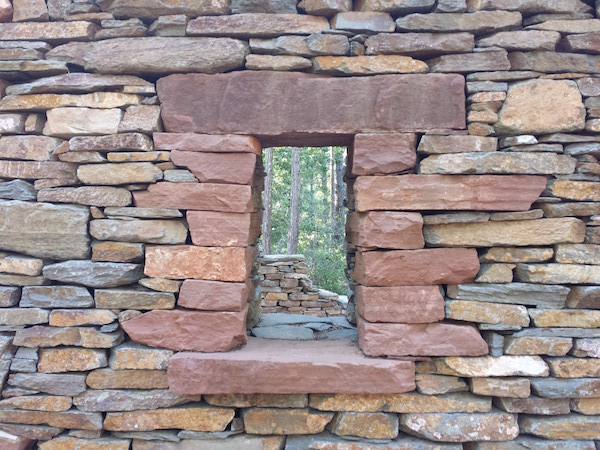
Take a long drive through the countryside on a fall day. Beneath the colorful, swirling leaves, you will see solid stone buildings and farm walls that date back to more than one hundred years ago. Most of these were built by hand, using a simple, but sturdy, method of construction called dry stack.
Dry stack is a method of building that uses natural stone without cement or concrete. Stones are carefully selected and placed in an interlocking pattern so the wall supports itself. For our colonial ancestors, the advantages of this technique were that it took few tools and it utilized the rocks that they found in their fields as they ploughed. While you may not worry about such things, dry stack stone construction does offer a number of advantages today, including:
- Durability: Because they don’t use mortar, dry stack stone walls conform to, and can settle with, the earth when it shifts—they are more resistant to earthquakes than brittle mortar. This makes them particularly appropriate for terraces and retaining walls.
- Water Drainage: The small spaces in between the stones allow water to move through freely, so ice will not become trapped inside and cause frost heave during the winter.
- Flexibility: Dry stack walls do not require a stiff concrete footing, which saves labor and material expense, and means that they fit practically anywhere.
- Ease of Repair: If your dry stack stone wall does become damaged, you can re-use the same materials, which saves labor and money when compared to mortared walls.
- Good Looks: Finally, a dry stack wall gives your property a classic, rustic look, makes great use of existing natural resources, and complements the environment around it.
- Tradition: Think of it this way—dry stack construction was good enough for the Egyptians when they build the pyramids, the Peruvians when they built Machu Picchu, and was used in countless other ancient structures. Your own dry stack wall can be a part of this great heritage!
Ready to start your stone wall?
Find ProsChoosing the Right Stone for Your Dry Stack Wall
Stone comes in three basic shapes: round field stone, flat stacking stone, and dressed stone, which is uniformly cut. Each shape has its own look. Try to match the type of stone you use with the style of your home and garden. Dressed stone, for instance, creates a formal look that might be out of place in a more rustic setting. Use a harder stone if your wall is going to be part of a water feature, such as a fountain or waterfall. Angular, flat stones are generally easier to work with than round field stones.
Stone is sold by the ton, and can be delivered to your home on wooden pallets. Be sure to also buy crushed stone (also known as fines, stone screenings or stone dust) for filling in gaps and for leveling out the foundation.
Should I Hire a Contractor to Build My Dry Stack Stone Wall?
Building a dry stack wall involves measuring out your project, buying stone, digging a trench into the earth to create a foundation, and laying the stones one layer, or course, at a time. Although it does not require a great deal of equipment, the process is labor-intensive and can take a lot more time and concentration than the average homeowner has to spend. For this reason, many people prefer to hire contractors for this kind of work. But with the right care during the building process, your dry stack stone wall will remain maintenance-free and worry-free for years, and remain a beautiful addition to your home.
 Types of Retaining Walls
Types of Retaining Walls  Exposed Brick Walls – What to Consider
Exposed Brick Walls – What to Consider  Enhance Your Landscaping with a Keystone Retaining Wall
Enhance Your Landscaping with a Keystone Retaining Wall  Acoustic Ceilings
Acoustic Ceilings  Stone and Gravel Driveways
Stone and Gravel Driveways 

Are You Familiar With This Topic? Share Your Experience.